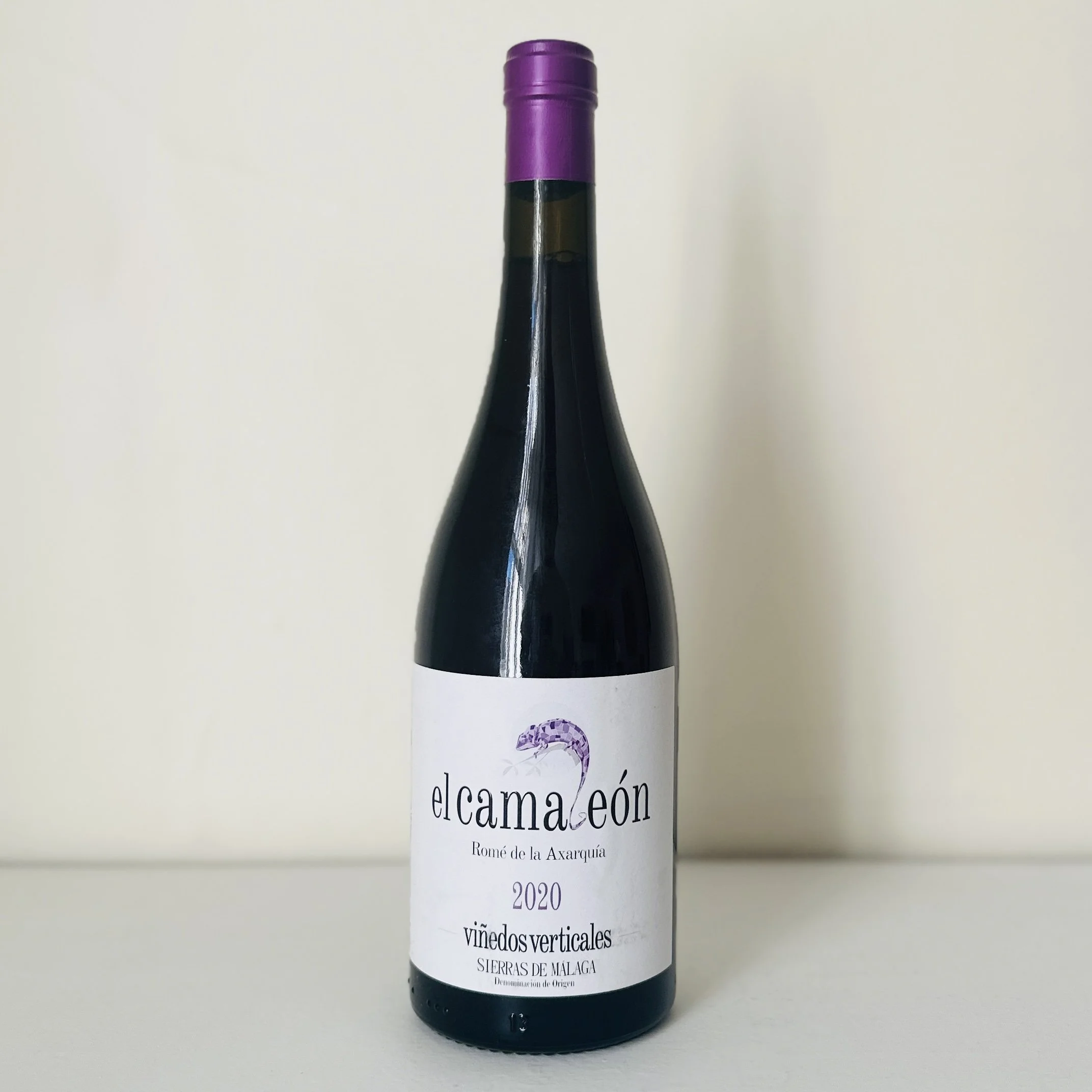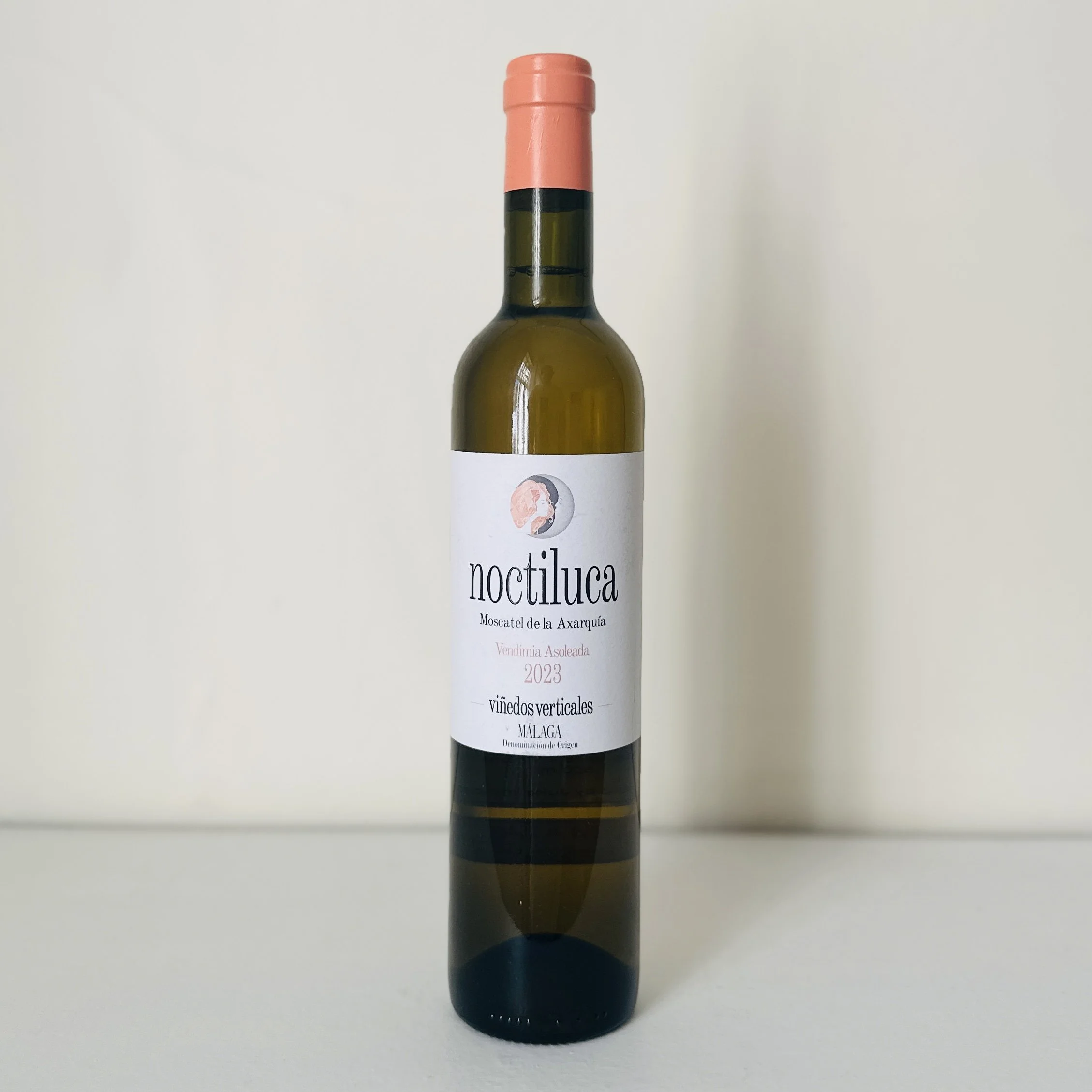VIÑEDOS VERTICALES
Juan Muñoz is a third-generation winemaker in Axarquía (Málaga). He joined forces with his friend and talented oenologist Vicente Inat in 2015 to start Viñedos Verticales. The goal from the beginning was to show off the terroir of this incredibly unique region and highlight its indigenous grapes.
Located in Moclinejo, viticulture here is not for the faint of heart. Although they’re only fourteen kilometres from the coast, nearly looking across the strait of Gibraltar at Morocco, the vineyards quickly climb high into the mountains. Their sites top out at a thousand metres above sea level, with the protective peaks to the north nearly doubling their stature. The vineyards are often so steep that mechanization is impossible. Grapes are transported to the winery with the help of their closest friends: the local donkeys and mules.
They boast the most sunshine hours in Europe and see consistently warm temperatures year round. Fortunately, the indigenous varieties, Doradilla and Romé, have adapted to the oppressive summer heat, ripening later than expected. Across their vineyards, you’ll find schist, slate, and phyllite.
In the cellar, they balance the hands-off winemaking with precision. All cuvées undergo spontaneous fermentation, sometime in hundred-year-old foudres. They’ll occasionally fine using bentonite, and their use of SO2 is judicious. Production is tiny, only a few thousand cases per year.
MORE FROM SPAIN: SUCCES
2022 LA RASPA BLANCO
This wine comes from a combination of young vines on the flatlands and steep hillsides at 600m above sea levels. Soils are predominantly schists and black phyllites. Muscat of Alexandria (80%) is harvested the first week of August while the extraordinarily obscure and nearly extinct Doradilla (20%) is harvested a full month later. The wine is fermented in stainless steel tanks before being racked into concrete for a five month élevage. 1318 cases were produced.
2021 LA RASPA TINTO
This wine is a blend of Syrah (70%) and Romé (30%), an obscure and endangered local variety. The former comes from El Romeral in Colmenar, planted at 800m above sea level, surrounded by holm oaks. The latter is in Santo Pitar at 1000m above sea level. Both are north facing and feature schists and black phyllite soils. The Syrah ripens in early September while the Romé takes an additional month. They are fermented separately in stainless steel and then blended for ageing in neutral 600L barrels. Only 660 cases were produced. 13.5% ABV, 3.65 pH, 5.63 g/L TA, 18ppm free SO2
2023 EL CAMALEÓN
This wine is made exclusively from Romé, a rare late-ripening variety indigenous to Axarquía. It is disease-resistant despite having thin skins and modest pigmentation. The vines can be found in three vineyards: Santo Pitar, Corumbela, and Sedella. These sites are at 700-1000M above sea level on black phyllite and slate soils, interplanted with Muscat, which aids in pollination. They do a green harvest at the start of September, removing clusters that haven’t gone through veraison so each plant can focus its energy on the remaining crop. The grapes are hand-harvested in small boxes, partially transported by donkeys since the sites are so remote. The grapes are destemmed into a 2000L foudre where they ferment on skins for three weeks. The wine is then pressed off and aged for an additional ten months in foudre before bottling unfined and unfiltered. Only 250 cases were produced. 13% ABV
2023 NOCTILUCA
This wine comes from one of their most precious vineyards, Viña de Reyes in Lo Torres. This was amongst the first sites to be replanted after phylloxera, so the vines are over 130 years old. Planted on red phyllites, this Muscat d’Alexandria (aka Muscat de Málaga) faces north and yields tiny amounts of highly concentrated grapes. The clusters are hand-harvested from the wildly steel slope in mid-August and are arranged on mats to dry in the sun for ten days, a process known as Asoleo. The grapes are then whole-cluster pressed into stainless steel for fermentation. When they’ve reached the desired level of sweetness (around 200g/L), the wine is drastically cooled, which sends the yeast into hibernation. After a short élevage at those low temperatures, the wine is bottled. Only 245 cases were produced. 10.5% ABV


